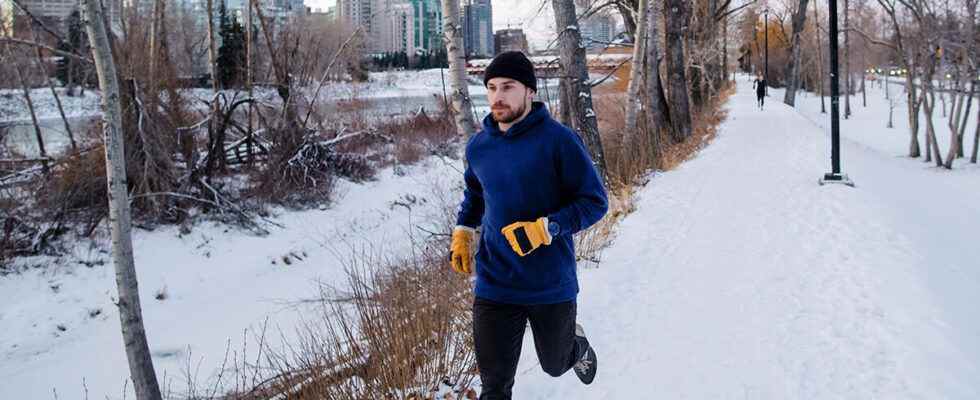As the saying goes: There’s no such thing as bad weather, just bad gear.
When you’re properly dressed for the conditions, nothing can stop you from crushing an outdoor workout. And since it’s perfectly safe to exercise outside all winter long, you can keep logging those miles even when the mercury drops.
Learn to love a cold-weather run by layering up with these 15 cold-weather running essentials.
Winter running essentials
- Best base layer: Under Armour ColdGear Long Sleeve Shirt
- Best running vest: HAGLÖFS L.I.M. Shield Comp Vest
- Best mid layer: The North Face Riseway 1/2 Zip Top
- Best winter jacket: Sugoi Alpha Hybrid Jacket
- Best running tights: Craft Sports Men’s and Women’s Wind Tights
- Best running pants: Craft Sports Pro Running Pants
- Best running socks: Darn Tough Run 1/4 Ultra-Lightweight Sock
- Best running shoes: Saucony Peregrine Ice+
- Best gaiter: Smartwool Merino 150 Pattern Neck Gaiter
- Best ear warmer: Atneato Ear Warmer Headband
- Best winter hat: Salomon Unisex Beanie
- Best gloves: Brooks Running Fusion Midweight Gloves
- Best sunglasses: Oakley Radar EV Path
- Best hand warmers: Hot Hands Hand Warmers
- Best lip protectant: Aquaphor Lip Protectant + Sunscreen
How we chose the best winter running gear
We spoke with Marco Anzures, an elite-level running coach, to get ALL the deets on keeping your cool while running in the cold. Here’s what he recommends looking for when gear shopping:
- Keep it light. Choose items that insulate well without adding lots of weight to bog you down. No matter how chilly it’s gonna be, wearing a parka during a run just ain’t it.
- Look for layers. Related to the above, you’ll want to choose relatively thin pieces that layer well and that you can easily mix and match based on the weather conditions. Again, park that parka.
- Avoid cotton. Several materials will work just fine, but cotton is not your friend. “Cotton will just soak up your sweat and keep you cold,” advises Anzures. He adds that any moisture-wicking material is always a good choice.
With these tips in mind, we included light, layerable, non-cotton picks with amazing customer reviews. We also put all of our picks through a thorough vetting process that checks for unsupported health claims, shady business practices, and lawsuits involving the company’s products.
Pricing guide
- $ = under $30
- $$ = $30–$80
- $$$ = over $80
The essentials: The best cold weather running gear
Get decked out and hit the block.
Best base layer
Under Armour ColdGear Long Sleeve Shirt
- Price: $$
- Pros: lightweight, sweat-wicking, warm
- Cons: runs small, according to some reviews
You can’t go wrong with a base layer from the company that pretty much invented them.
This basic long-sleeve shirt is actually not so basic. It features Under Armour’s exclusive ColdGear technology, a double-layer fabric that’s designed to wick moisture away from your skin while maintaining body heat.
The special lightweight construction keeps you warm and comfortable without extra bulk that can slow you down. But some reviewers say it runs a bit small.
Best running vest
HAGLÖFS L.I.M. Shield Comp Vest
- Price: $$$
- Pros: lightweight, provides wind protection, portable
- Cons: expensive for its limited functionality (best for serious outdoor runners), only in men’s sizes
Personally recommended by Anzures, this vest is lightweight but provides extra protection for your torso in windy conditions. And let’s be real here — you gotta keep those lungs warm to power through the brutal cold AND wind.
This vest is also easy to carry with you JIC. It folds up small enough to fit in a pocket, so you can whip it out if the wind starts whippin’.
Best mid layer
The North Face Riseway 1/2 Zip Top
- Price: $$
- Pros: thin, great for layering
- Cons: runs small, not warm enough for below-freezing temps
Here’s a pro tip: When looking for gear for inclement weather, turn to specialist outdoor brands like The North Face.
Their products get tested in the toughest conditions and have a lifetime guarantee (yes, the duration of your entire life). This pullover — made with The North Face’s FlashDry-XD material — wicks away sweat to keep you warm and dry.
It makes for the perfect top or mid layer on a chilly (but not freezing) run.
Best winter jacket
Sugoi Alpha Hybrid Jacket
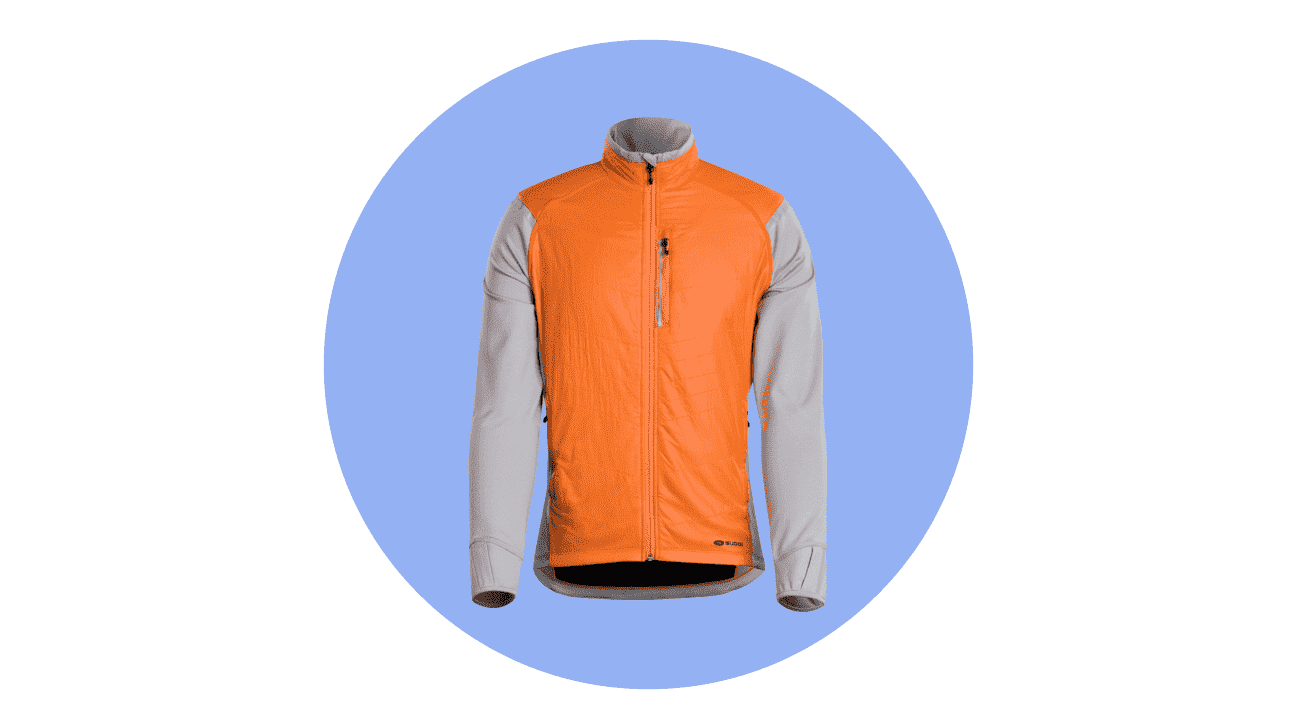
- Price: $$$
- Pros: wind- and water-resistant, lightweight but insulated
- Cons: on the expensive side
You only need one really good outer layer for cold runs, and this one is it.
The wind-resistant panel along the front keeps your torso protected, and the stretchy knit fabric on the sleeves and sides won’t limit your range of motion.
We’ve been running in freezing, snowy, and bitter cold temps in this for three winters and counting!
Best running tights
Craft Sports Men’s and Women’s Wind Tights
- Price: $$
- Pros: windproof, designed to keep you warm
- Cons: run small and long
These classic tights come from a brand known for Nordic ski gear (no doubt they’re all about keeping you warm) and are windproof to keep that icy wind from slowing you down.
The brushed interior in the women’s version feels like butter when you slip them on and offers a little extra insulation too. (Note: Size up if you’re between sizes, because these leggings are made for long legs and lean frames.)
Best running pants
Craft Sports Pro Running Pants
- Price: $$$
- Pros: lightweight, warm
- Cons: expensive
These pants come with Anzures’ seal of approval. These pants are lightweight but made of a jersey blend that still provides sweatpant-level coziness.
They’re also trimmed with reflective details, so you’ll be seen no matter what kind of winter wonderland you’re walking running in.
Best running socks
Darn Tough Run 1/4 Ultra-Lightweight Sock
- Price: $
- Pros: moisture-wicking, dries quickly, no bunching
- Cons: too narrow for wide feet, according to some reviewers
On a warm day, you might just grab any old pair of socks. But when you exercise in the cold, your body sends blood straight to your major muscle groups, leaving body parts like your fingers, toes, ears, and nose to get extra-cold.
So grab a merino wool-blend sock like this one. Merino wool is warm and moisture-wicking. In fact, it’s what Anzures recommends for running socks all the time. It also has a special construction that hugs the curves of your foot and stays put, so there’s no loose material to rub you the wrong way.
(Wait, does that mean… no blisters? 🙀 Sign us up!)
Best running shoes for winter
Saucony Peregrine Ice+
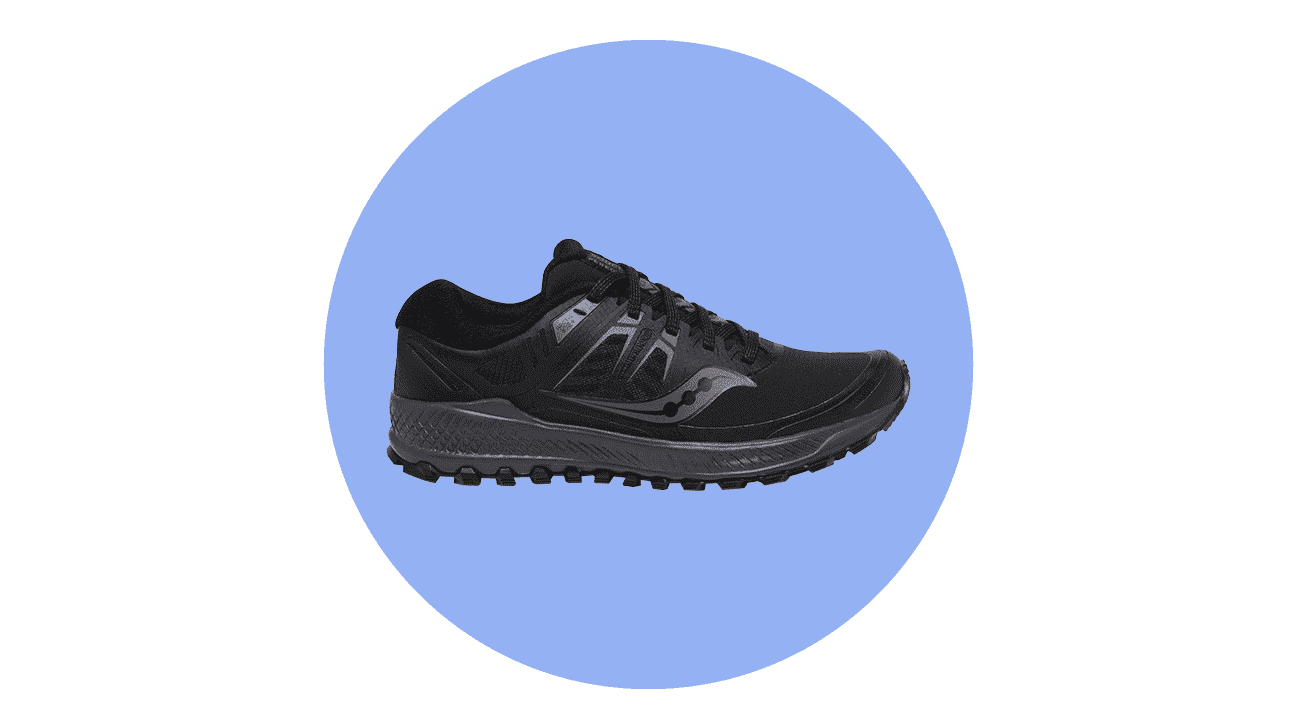
- Price: $$$
- Pros: reduce ice slippage, made to keep feet warm and dry
- Cons: made for narrow feet, may still slip on ice
Yeeeeeah, this is where we always get excited: The kicks.
Designed specifically for winter running, the Peregrine Ice+ has more grip than your traditional road running shoe (meep meep!), so you’ll feel traction on icy surfaces.
The water-resistant upper keeps your feet warm and dry through the deep winter and straight into spring. BUT reviewers caution that these shoes may still slip on the ice — so don’t go thinkin’ you can sprint straight across an ice rink.
Best gaiter for running
Smartwool Merino 150 Pattern Neck Gaiter
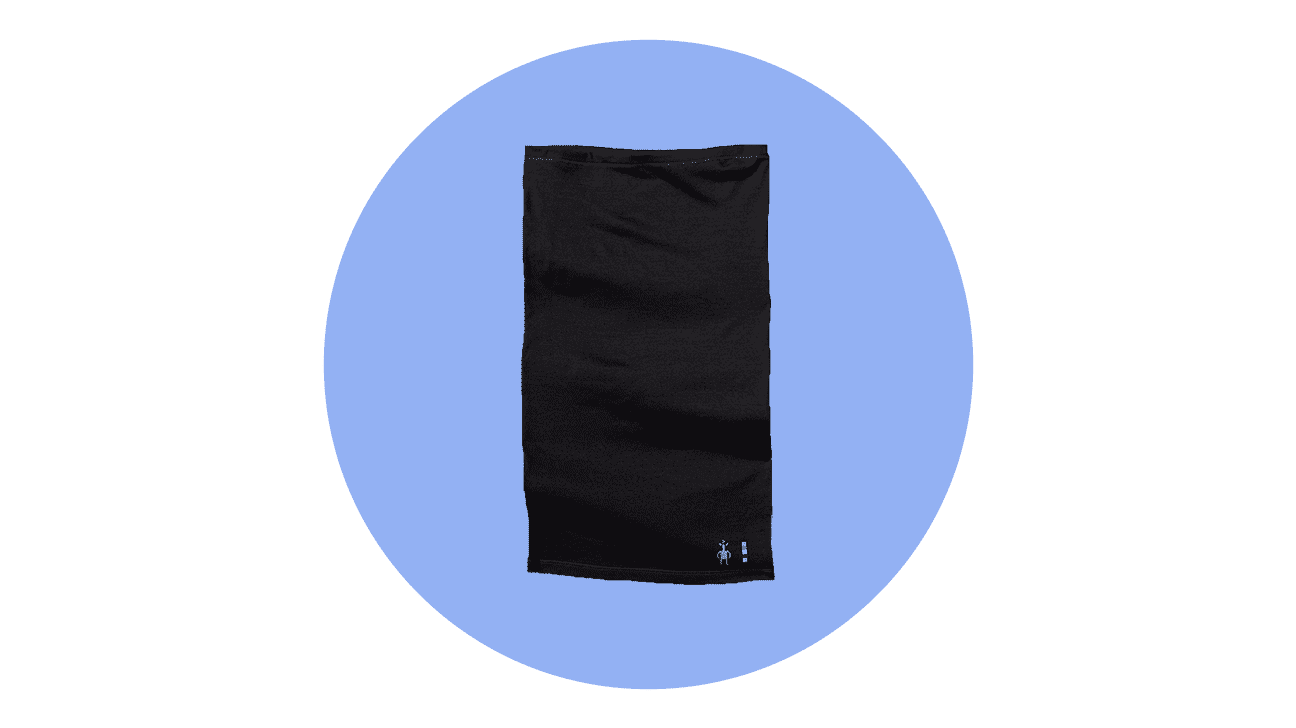
- Price: $
- Pros: lightweight, quick-drying, moisture-wicking
- Cons: kinda pricey
The quickest way to make every shirt in your arsenal more versatile: Add a gaiter. Top a tank, tee, or long-sleeve with one of these to transform it into a turtleneck-style top. Scrunch it down for scarf-level warmth or pull it up over your nose for bitter cold, windy conditions.
Reviewers say it’s the perfect gaiter for active folks — the wool keeps you warm without overheating, and it’s odor-resistant, so you don’t need to wash it after every wear.
Best ear warmer for running
Atneato Ear Warmer Headband
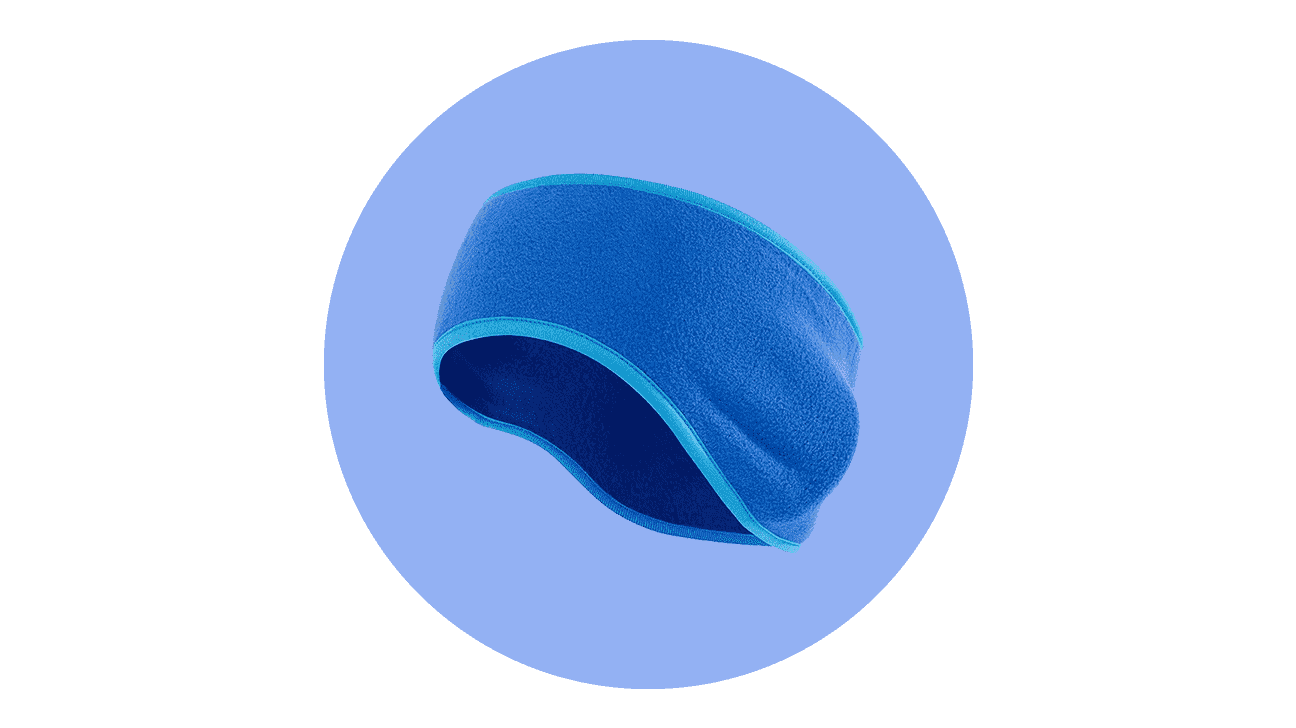
- Price: $
- Pros: inexpensive, doubles as a sweatband, warm
- Cons: very thin
Your winter kit is not complete without an ear warmer. That horrible stinging you get in your ears after a run in chilly weather can become a thing of the past.
This creation from Atneato doubles as a sweatband, and it strikes a great balance of lightness and flexibility with providing enough fabric to keep the wind chill out.
Reviewers say it’s super comfy and fits well over headphones — but some say it’s too thin for really cold weather.
Best winter hat for running
Salomon RS Unisex Beanie
- Price: $$
- Pros: moisture-wicking, windproof
- Cons: not a lot of stretch for bigger heads
On some days, a headband just won’t cut it. That means it’s time reach for a full-coverage hat. This one is made with moisture-wicking materials and features a windproof front, as well as slots for sweatbands and sunglasses.
But you might need to look elsewhere if you’ve got a big noggin — this beanie doesn’t have a whole lot of give.
Best gloves for running
Brooks Running Fusion Midweight Gloves
- Price: $$
- Pros: tech-friendly, magnetized cuffs
- Cons: a bit expensive
🎼 Run glove, run glove, let’s… get… together and… feel alright. 🎤
The most important feature for running gloves (other than warmth, of course) is a tech-tipped thumb and index finger, so you can keep your music and run-tracking apps in play at all times.
This pair has that covered, along with magnetized cuffs to keep the happy couple snuggled up together when not in use.
Best sunglasses for running
Oakley Radar EV Path
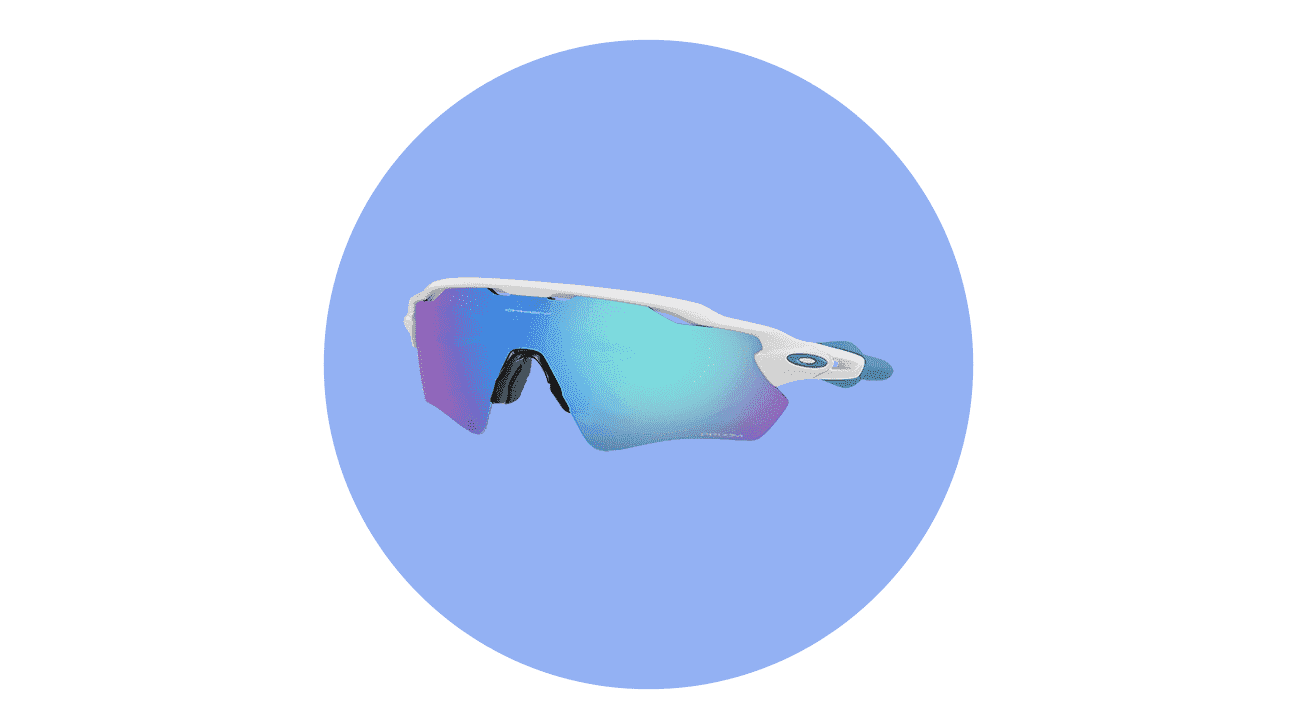
- Price: $$$
- Pros: filter out white light
- Cons: frequently sold out due to high demand
Do you really need a winter-specific pair of sunglasses? Truthfully, no. Any pair will do. But trust us when we tell you this pair is worth consideration.
You know how bright the sun gets on a winter day when it reflects off the snow? Well, these lenses specifically filter white tones, so you can see more clearly without being blinded by the glare.
If you’re into snow sports, they’ll do double duty on the slopes, so they’re worth the investment. Still not sure? Just try on a pair and you’ll instantly understand.
Best hand warmers
Hot Hands Hand Warmers

- Price: $–$$
- Pros: keep your hands warm
- Cons: may cause burns
These bad boys aren’t just for your parents during tailgate season.
It’s a good idea to stash a box of these near your gloves for below-freezing days. Slip a pair into your gloves to keep your hands toasty through every mile.
But take note: If you wear them right next to your skin (without a layer between, like a glove pocket), they can burn your skin.
Best lip protectant
Aquaphor Lip Protectant + Sunscreen
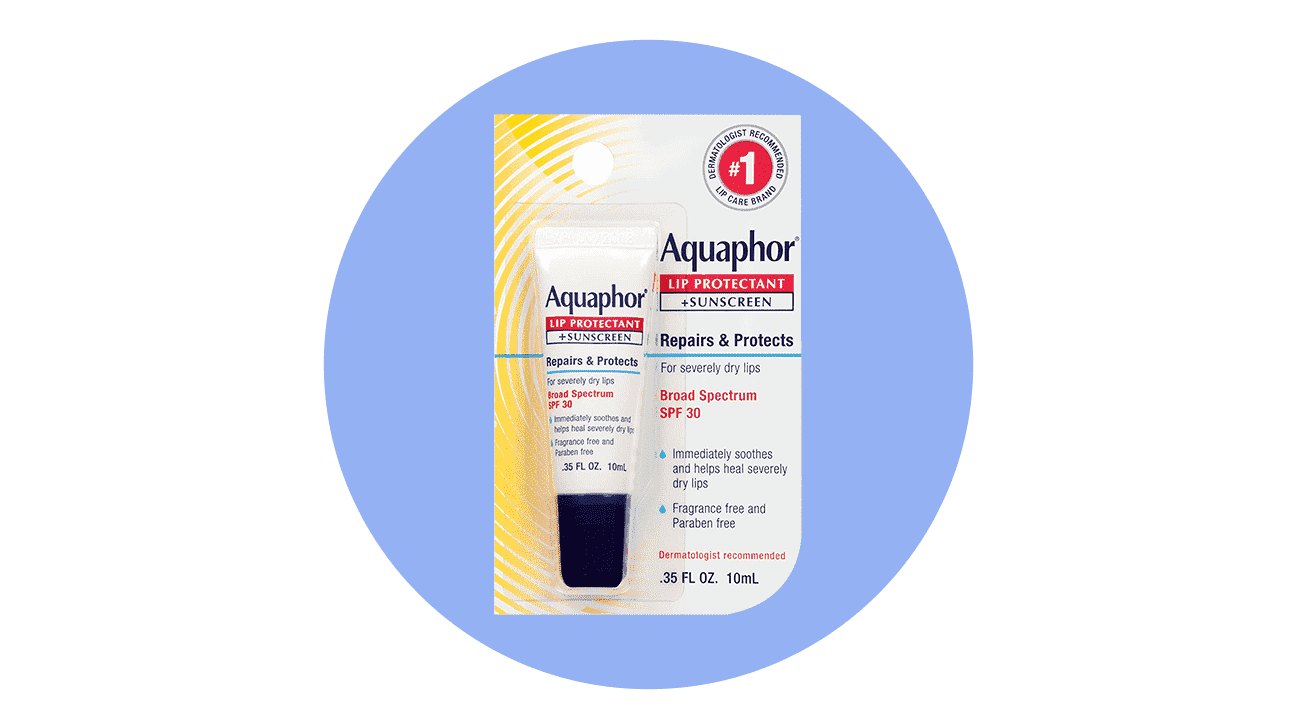
- Price: $
- Pros: protects and moisturizes lips
- Cons: tastes terrible and may be drying, according to reviewers
We fall squarely in the can’t-leave-home-without-lip-balm camp — especially during dry conditions. The post-run burn, we can handle. Cracked lips? Not so much.
This balm locks in moisture and prevents water loss from your lips, but can also be used around your nose and as an anti-chafing body balm for long runs.
Bonus: It’s got SPF 30, which is a must for outdoor workouts. On bright, snowy days, sunburn can still get you.
Caution, though: Some reviewers report that — although the SPF worked — the lip balm tasted like a mouthful of sunscreen.
Feelin’ chilly? Here are some shopping tips
Ready to shop? Make sure you know exactly what you need first with these helpful tips from Anzures.
Moisture-wicking materials are a must
With the exception of socks (we’ll get to those in a sec), Anzures says there’s no specific material you need to be on the hunt for — just seek out moisture-wicking materials like wool, bamboo, polyester, nylon, etc.
Even blends of these materials with cotton will work — just avoid pure cotton because it will make your cold, wet clothes cling to you in low temps.
“Moisture-wicking material from any brand is a safe choice when choosing any workout clothing,” says Anzures.
Re: socks, tho? Merino wool is where it’s at. Per Anzures, Merino wool socks are a great alternative to cotton socks because they’re comfortable, wicking, and warm.
Layer up
Layering is definitely the key to a successful cold-weather run. Says Anzures, “There are a variety of jackets, pants, and tights that you can layer to match the type of protection you are looking for from the elements.”
Here’s his layering cheat sheet, based on the outdoor temp at the time of your run:
- 50 to 59°F: T-shirt and shorts
- 40 to 49°F: long-sleeve shirt, shorts or tights, optional thin gloves and ear warmers
- 30 to 39°F: long-sleeve shirt, light vest or tee, shorts, tights, cotton gloves, and a beanie
- 20 to 29°F: long-sleeve shirt, light vest or tee, jacket or windbreaker, shorts or pants, tights (for extra warmth, layer short tights over long tights), cotton gloves, beanie
- Less than 20°F: long-sleeve shirt, light vest or tee, jacket or windbreaker, pants, tights (for extra warmth, layer short tights over long tights), thick mittens (for extra warmth, layer over gloves), beanie
Why running outside is good for you
You might check the forecast during winter months and shudder at the thought of getting in some road work.
Why couldn’t you just pay for a gym membership, save yourself some dollars on protective gear, and stay even warmer?
Well, running outside has some unique benefits notable for those who are hell-bent on reaching their stamina, cardio, and leg strength goals:
- Improved bone growth. Running outside puts more impact on your bones and joints and the tissues that connect them. As a result, your bones replenish more over time than when you use a treadmill, which has a softer surface that moves as you run. This can help keep osteoporosis at bay as you age.
- A super butt. Running on a stationary surface means your hamstrings and glutes come into play more than they would on an already-moving platform. Cue a hench butt.
- A mental boost. The power of feeling the wind in your hair and seeing the scenery change can reduce anger, depression, and stress more than indoor exercise, according to a study from 2017.
- Improved stability. Running in a straight line means your stabilizing muscles don’t work as hard. Exercising outside means you may have to adjust your course and avoid obstacles, so you’ll give those stabilizers a bit more of a push.
- Improved focus. Especially if you’re training for a big race, practicing outdoors to prepare your body to maneuver around people and obstacles (which you won’t encounter on the treadmill) is essential for keeping a clear headspace on the day.
We take a closer look at indoor and outdoor running here.
Tips for lacing up in low temps
Here are some tips to make your run just as fun as one in the sun.
Warm up inside
So, we all know that warming up before a workout is e s s e n t i a l. But warming up inside before you head outside for a run in the cold offers the additional benefit of getting you and your muscles extra-toasty.
Kinda like when you preheat your car in the middle of January and crank up the heat so it’s warm and comfy before leaving your driveway.
Consider rain and wind
Rain and wind will make it feel colder than it actually is — by as much as 10 to 20°F, according to Anzures.
And keep in mind that waterproof clothing isn’t the solution: “Clothing designed to be waterproof won’t breathe well, and your sweat will stay trapped to your inner layers if there is not good ventilation,” he says.
Account for your body warming up
Be careful not to overdress for your dash through the snow. “A general rule of thumb,” explains Anzures, “is to take the outside temperature and add 10 to 20°F to account for your body warming up while you run.”
He says you should also consider your personal hot/cool preferences — if you are always cold, bundle up a bit more than recommended, and vice versa if you’re a walking furnace.
tl;dr
Winter feels like a time to curl up and turn your back on your workout — but it’s important that you do anything but.
Think about it. If you can keep your motivation strong during hostile weather, imagine what you can achieve when it’s actually mild or even (whisper it) warm outside.
Outdoor workouts are safe as can be — in all weather. So don your fancy hat, thermal tights, and ear warmers and stomp the sidewalk today.
